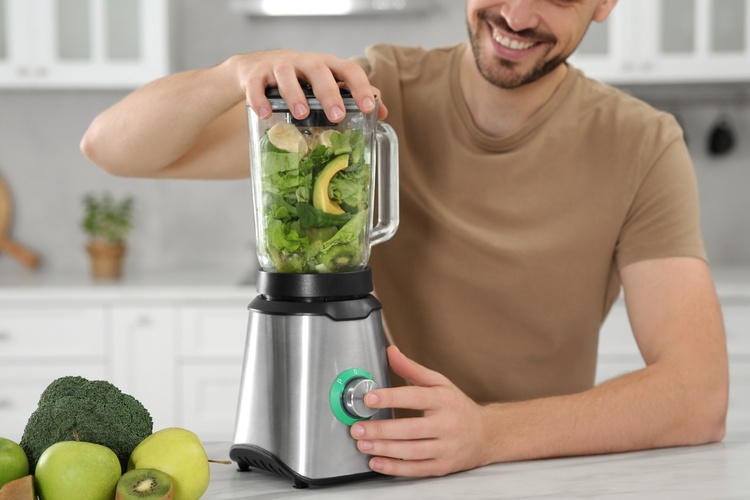Practical Meal Prep Techniques to Save Time and Reduce Waste
Efficient meal prep can streamline daily routines while supporting a balanced diet and reduced food waste. This article outlines practical strategies for planning, batching, and storing meals to preserve nutrients, manage hydration and macronutrient needs, and make sustainable choices.

Efficient meal prep helps you spend less time cooking each day and reduces food waste by encouraging intentional purchases, batch cooking, and smart storage. Clear meal planning paired with basic food-label literacy makes it easier to balance protein, fiber, and other macronutrients while retaining vitamins and minerals across the week. The techniques below focus on realistic steps for busy schedules, include plantbased and mixed-diet approaches, and emphasize hydration and sustainability.
This article is for informational purposes only and should not be considered medical advice. Please consult a qualified healthcare professional for personalized guidance and treatment.
mealplanning: How to structure weekly menus?
Start by assessing your weekly schedule and setting two to three meals that repeat across several days. Use a simple template: breakfasts that can be prepped once (overnight oats, egg muffins), lunches that travel well (grain bowls, salads in jars), and dinners that adapt from a single protein. Include snacks that provide fiber and protein to manage hunger. When planning, check foodlabels for serving sizes and ingredient lists to avoid excess sodium or added sugars. Planning around a few base ingredients reduces shopping time and lowers the risk of waste from unused items.
mealprep: Which batch-cooking methods save time?
Batch cooking techniques include roasting a tray of vegetables, cooking a large grain batch (rice, quinoa), and preparing a versatile protein (baked chicken, tofu, legumes). Allocate a single 1–2 hour block for chopping, roasting, and portioning into containers. Use versatile sauces and dressings to vary flavors across meals without extra cooking. Portion proteins and sides into meal-sized containers to simplify reheating. Freezing individual portions that won’t be eaten within three to four days preserves nutrients and prevents spoilage. Reheating gently helps retain texture and nutrient quality.
macronutrients: How to balance plates for energy?
Aim for balanced plates combining protein, carbohydrates, and healthy fats. A practical ratio is to fill half your plate with vegetables and fiber-rich foods, one-quarter with protein, and one-quarter with whole grains or starchy vegetables—adjust based on activity and personal dietary needs. For plantbased meals, combine legumes with whole grains to improve protein quality. Include sources of healthy fats like nuts, seeds, or olive oil to support satiety. Label prepped meals with macronutrient notes (approximate protein/fiber) to guide fueling choices across the week.
micronutrients: How to preserve vitamins and minerals?
To retain vitamins and minerals, minimize overcooking and store prepped foods properly. Steaming or roasting vegetables quickly preserves more nutrients than prolonged boiling. Keep nutrient-dense foods like berries, leafy greens, and colorful vegetables at the front of the fridge so they are used first. Use air-tight containers to reduce oxidation, and store dressings separately to prevent wilting. For long-term storage, freezing can lock in many micronutrients; blanch vegetables briefly before freezing to preserve color and vitamins. Rotate ingredients to avoid relying on a narrow set of foods.
hydration and protein: Managing fluids and muscle needs
Hydration supports digestion, nutrient transport, and overall wellness; include portable water bottles and consider hydrating foods like soups, smoothies, and fruit. Prepping flavored water or electrolyte-rich beverages for hotter days can help maintain balance. For protein, prepare a mix of animal and plant sources based on preference—cooked legumes, Greek yogurt, eggs, canned fish, or marinated tempeh are convenient options. Portion protein per meal to meet individual needs, and combine with fiber-rich vegetables to slow absorption and sustain energy. Label containers with protein amounts if tracking intake.
sustainability and foodlabels: Reduce waste with choices
Choose imperfect produce when possible, plan meals that use whole items (stems, leaves, peels where edible), and repurpose leftovers into soups, wraps, or mixed bowls. Read foodlabels for storage instructions and best-by dates to prioritize items at risk of spoiling. Embrace plantbased proteins and seasonal produce to lower environmental impact and often reduce cost. Store roots and hardy vegetables in cool, dark places, and keep herbs and greens in lightly damp paper towels to extend shelf life. Composting scraps further reduces waste if available in your area.
Conclusion
Practical meal prep blends thoughtful planning, balanced macronutrient choices, and sensible storage to save time and cut waste. Small changes—consistent batch cooking, checking foodlabels, and rotating ingredients—make weekly routines more efficient while protecting vitamins, minerals, and hydration needs. Over time, these habits can simplify shopping and cooking, reduce spoiled food, and support both personal wellness and sustainability.





